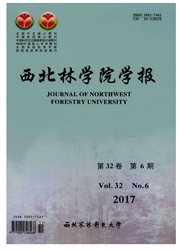

 中文摘要:
中文摘要:
以延河流域为例,研究了基于GIS的植被恢复分区。在该流域植被恢复适宜性评价及分区中,主要考虑对植被类型(乔木、灌木)及植物生长影响较大的降雨、坡度、坡向、温度等因素,并采用专家评分法给各影响因子权重和适宜性评价赋值。经过GIS的数据处理、空间分析、模型建立及运算,得到植被恢复适宜性评价图,经过分类、合并,将延河流域植被(乔木)适宜性划分为极不适宜区、不适宜区、适宜区、极适宜区;灌木适宜性划分为不适宜区、适宜区、极适宜区,得到植被恢复分区图。
 英文摘要:
英文摘要:
Taking Yanhe River watershed as an example, regionalization of vegetation restoration was studied by using GIS technique. To carry out suitability assessment and regionalization of the vegetation restoration in the region,the emphasis was on the type of vegetation (such as arbor or shrub) and factors which exerted great influence on the growth of the plants, such as precipitaion,slope and its aspect and temperature. The weighs and suitability assessment values of selected factors were given by expert method. Through data dealing, spatial analyzing and model establishing and data handing, a vegetation restoration suitability map was obtained. After that, the value of suitability assessment was reclassified and merged. The area of vegetation for arbor restoration in the region was divided into four types: extreme unsuitable zone,unsuitable zone,suitable zone and extreme suitable zone, and meanwhile the area of vegetation for shrub restoration was divided into three types: unsuitable zone , suitable zone and extreme suitable zone. A map of vegetation restoration was got thereby.
 同期刊论文项目
同期刊论文项目
 同项目期刊论文
同项目期刊论文
 期刊信息
期刊信息
